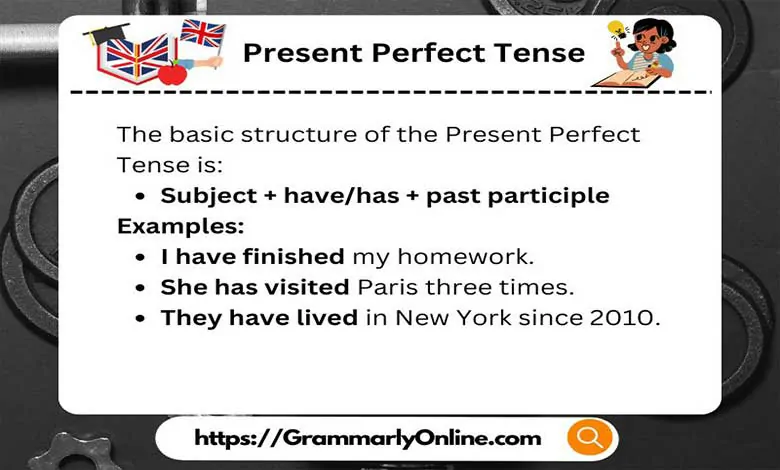

Understanding the Present Perfect Tense is essential for mastering the English language. This tense often used to express actions that occurred at an unspecified time before now, is a crucial component of effective communication. In this comprehensive guide, we will delve into the rules, usage, and examples of the Present Perfect Tense to help you grasp its nuances fully.
The Present Perfect Tense is a grammatical construct used to indicate that an action or situation has occurred at some point in the past but is relevant to the present. It is formed by combining the auxiliary verb “have” (or “has” for third-person singular subjects) with the past participle of the main verb.
The basic structure of the Present Perfect Tense is:
The Present Perfect Tense follows specific rules that dictate its proper use in sentences. These rules include the use of auxiliary verbs, past participles, and the situations in which this tense is applicable.
The auxiliary verbs “have” and “has” are crucial in forming the Present Perfect Tense. “Have” is used with all subjects except third-person singular pronouns (he, she, it), which use “has”.
The past participle form of the main verb is used in conjunction with “have” or “has”. Regular verbs typically add “-ed” to the base form, while irregular verbs have unique past participle forms.
The Present Perfect Tense is often used to describe actions that occurred at an unspecified time before the present. This can include experiences, changes, and accomplishments.
The Present Perfect Tense is used to talk about life experiences without specifying when they happened.
Actions that have present relevance or consequences are expressed using the Present Perfect Tense.
It is also used for actions that started in the past and are still continuing.
When an action has just been completed and its effects are still noticeable, the Present Perfect Tense is used.
One of the common mistakes is using the Past Simple instead of the Present Perfect when the time of the action is not specified.
While “just” is commonly used with the Present Perfect Tense, overusing it can lead to redundancy.
Avoid using the Present Perfect Tense with specific time expressions such as “yesterday,” “last year,” or “in 1999.”
To solidify your understanding of the Present Perfect Tense, try these exercises:
Exercise 1:
Exercise 2:
Mastering the Present Perfect Tense is vital for effective communication in English. By understanding its rules, usage, and common mistakes, you can enhance your language skills and express yourself more accurately. Practice regularly and incorporate these concepts into your daily conversations to become proficient in using the Present Perfect Tense.